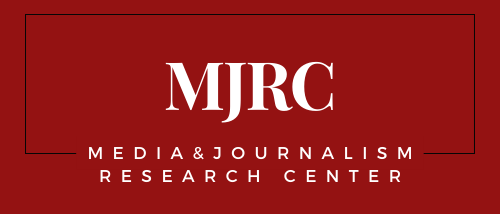Romania
Romania in Media Influence Matrix
Romania’s media market seems vibrant and diverse, but in reality, the local environment hardly enables independent journalism to thrive. Independent journalism survives thanks to a string of small online outlets that are struggling financially and grappling with a low level of trust and a public unwilling to pay for media content.
Media consumption in Romania shows similarities with European trends, but differs in a few important aspects. Television is by far the most used medium for media content consumption. Radio and the written press are the least used media in Romania: less than a quarter of Romanians listen to radio daily and only 6% of them read a newspaper. Social media is becoming increasingly influential as a source of information, with more than two-thirds of Romanians getting their news from social media platforms, especially from Facebook.
The speed of the internet often reaches high levels and data and mobile packages are affordable for many. Nevertheless, the digital divide in the country remains wide to the disadvantage of the elderly, the Roma, women and other vulnerable groups living in rural areas.
In terms of legislation, Romania boasts a media law framework that is compatible with EU legislation and that, in theory, should help create an enabling environment for independent journalism. However, implementation of the law is lacking and policies that regulate practice do not always function. Journalists routinely complain about problems related to access to public information and job conditions.
Media regulation is almost exclusively shaped by state bodies such as parliamentary committees, state-administered regulators and, occasionally, MPs who usually have little to no expertise in the field. The recently created data regulator is also led by people selected on political merits rather than competence. As a result, the data watchdog began to attack journalists instead of protecting people’s personal data.
A new generation of brash journalism outlets challenge the highly concentrated media system, but only outlets able to generate sufficient cash on their own can afford to be apolitical, and only a few major television chains and best-selling tabloids newspapers are in that position. The rest, particularly print media and outlets serving local communities, are highly vulnerable to pressures coming from all directions: politicians and political parties, government and municipalities or local businessmen.
Local media are in a dire situation. The sector seems to be diverse and competitive: hundreds of media outlets cover the country’s 41 counties. Many of them earn profits, but the reality behind these figures is much grimmer. Most of the local media outlets in Romania survive solely thanks to local municipalities or strongmen. The sharp decline experienced by local media, most notably print and radio, is of particular concern in a country where the citizens are still reluctant to pay for news and journalism.
Country Factsheet
Key Findings
Government, Politics and Media Regulation
Funding Journalism
Local Media in Romania: Financial Data
Technology, Public Sphere and Journalism
Methodology
FULL ROMANIA REPORT
2018 Edition
Support independent media research – your donation helps keep our work open.
Donate
